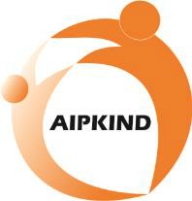Physiotherapy Modalities and Physiotherapy Modalities and its Effect on The Development of Functional Ability in Children with Cerebral Palsyits Effect on The Development of Functional Ability in Children with Cerebral Palsy
Abstract
In Indonesia, currently there are various physiotherapy intervention modalities for children with special needs, especially in cerebral palsy. The Bobath concept is a holistic approach to solving the problems of individuals with movement disorders and postural control as a result of lesions in the central nervous system. The purpose of this study was to determine the effect of physiotherapy modalities on functional abilities in children with cerebral palsy. This research was an experimental type that had a control variable with a nonequivalent control group design, but in this design the experimental group and the control group were not randomly selected, functional ability measuring tool used gross motor functional movement (GMFM). All respondents received treatment 16 times (2 times per week), measured as fisrt post-test, followed by treatment 16 times (2 times per week) measured as second post-test. The first post-test (16 times) and the second post-test (32 times), these data were compared. The results of the repeated measured ANOVA test in the control group revealed that there was a significant difference in functional ability after the bobath concept treatment (p=0.060; x1=-0.714; x2=-2.714) and after the bobath concept and taping treatment (p=0.027; x1=-2.400; x2=-6.000). But, there was found not significant after the bobath concept and stretching treatment (p =0.071; x1=-0.333; x2=-3.667), and after the bobath concept and infrared treatment (p=0.126; x1=-1.000; x2=-2.500). The results of the Freadman test there was a significant difference in functional ability after the bobath concept and massage treatment (p=0.023). The conclusion, there was a significant difference in functional ability improvement after being given treatment by the bobath concept, bobath concept plus taping, and/or bobath concept plus massage.
Keywords
Full Text:
PDFReferences
C. Sankar and N. Mundkur, “Cerebral palsy-definition, classification, etiology and early diagnosis,” in Indian Journal of Pediatrics, 2005. doi: 10.1007/BF02731117.
D. S. Reddihough and K. J. Collins, “The epidemiology and causes of cerebral palsy,” Australian Journal of Physiotherapy. 2003. doi: 10.1016/S0004-9514(14)60183-5.
M. Stavsky, O. Mor, S. A. Mastrolia, S. Greenbaum, N. G. Than, and O. Erez, “Cerebral palsy-trends in epidemiology and recent development in prenatal mechanisms of disease, treatment, and prevention,” Frontiers in Pediatrics. 2017. doi: 10.3389/fped.2017.00021.
D. Table, “Cerebral Palsy ( CP ) Data and Statistics for Cerebral Palsy Prevalence and Characteristics Cerebral Palsy Prevalence Among 8-Year-Old Children by Site , Autism and Developmental Disabilities Monitoring ( ADDM ) CP Walking Ability Among 8-Year-Old Childre,” Cent. Dis. Control Prev., pp. 8–11, 2021, [Online]. Available: https://www.cdc.gov/ncbddd/cp/data.html
H. Selina, W. Priambodo, and M. Sakundarno, “Gangguna Tidur Pada Anak Palsi Serebral,” Medica Hosp. J. Clin. Med., 2013, doi: 10.36408/mhjcm.v1i2.54.
P. Rosenbaum, N. Paneth, A. Leviton, M. Goldstein, and M. Bax, “A report: The definition and classification of cerebral palsy April 2006,” Developmental Medicine and Child Neurology. 2007. doi: 10.1111/j.1469-8749.2007.tb12610.x.
J. S. Tecklin, Pediatric physical therapy: motor development. 2008.
E. Odding, M. E. Roebroeck, and H. J. Stam, “The epidemiology of cerebral palsy: Incidence, impairments and risk factors,” Disabil. Rehabil., 2006, doi: 10.1080/09638280500158422.
H. K. Graham et al., “Cerebral palsy,” Nature Reviews Disease Primers. 2016. doi: 10.1038/nrdp.2015.82.
E. Mardiani, “Faktor-Faktor Risiko Prenatal dan Perinatal Kejadian Cerebral Palsy,” Univ. Diponegoro, 2006.
C.-A. Haenggeli and S. Suter-Stricker, “Freeman Miller, Steven J. Bachrach (eds): Cerebral palsy. A complete guide for caregiving, Second edition,” Eur. J. Pediatr., 2007, doi: 10.1007/s00431-007-0457-4.
M. Kerem, “Physiotherapy for Children with Cerebral Palsy,” Epilepsy Child. - Clin. Soc. Asp., 2011, doi: 10.5772/20321.
T. Contributors et al., “Bobath Approach Clinical Application of Bobath Concept,” pp. 2–6, 1996.
J. O. Ramírez and S. P. de la Cruz, “Therapeutic effects of kinesio taping in children with cerebral palsy: A systematic review,” Arch. Argent. Pediatr., vol. 115, no. 6, pp. E356–E361, 2017, doi: 10.5546/AAP.2017.ENG.E356.
K. Jackson, M. C. Oluebube, N. S. Shah, and A. Essam, “Jump to:navigation, search Original Editor - Lucinda hampton Top Contributors - Lucinda hampton, Reem Ramadan, Kapil Narale, Admin, Rafet Irmak, Naomi O’Reilly, Shaimaa Eldib, Rachael Lowe, Kim Jackson, Mmadu-Okoli Chukwunonso Oluebube, Nupur Smit Shah and Ahmed Essam,” pp. 1–10.
J. Distortion and R. Iodometric, “目录 Contents 引物设计图解 1,” pp. 3–5.
S. S. Kitchen and C. J. Partridge, “Infra-red Therapy,” Physiother. (United Kingdom), vol. 77, no. 4, pp. 249–254, 1991, doi: 10.1016/S0031-9406(10)61743-9.
A. R. Harvey, “The Gross Motor Function Measure (GMFM),” Journal of Physiotherapy. 2017. doi: 10.1016/j.jphys.2017.05.007.
F. B. Nida Sha , Rehana Mushtaq, “Pakistan biomedical journal,” no. c, pp. 37–40, 2021.
A. Shamsoddini et al., “The impact of Kinesio taping technique on children with cerebral palsy.,” Iran. J. Neurol., vol. 15, no. 4, pp. 219–227, 2016, [Online]. Available: http://www.ncbi.nlm.nih.gov/pubmed/28435631%0Ahttp://www.pubmedcentral.nih.gov/articlerender.fcgi?artid=PMC5392196
B. M. Kalkman, L. Bar-On, T. D. O’Brien, and C. N. Maganaris, “Stretching Interventions in Children With Cerebral Palsy: Why Are They Ineffective in Improving Muscle Function and How Can We Better Their Outcome?,” Front. Physiol., vol. 11, no. February, pp. 1–9, 2020, doi: 10.3389/fphys.2020.00131.
Z. Güçhan Topcu and H. Tomaç, “The Effectiveness of Massage for Children With Cerebral Palsy: A Systematic Review,” Adv. Mind. Body. Med., vol. 34, no. 2, pp. 4–13, 2020.
E. Beckung et al., “Health status of children with cerebral palsy living in Europe: A multi-centre study,” Child. Care. Health Dev., 2008, doi: 10.1111/j.1365-2214.2008.00877.x.
S. Sangam, A. Naveed, M. Athar, P. Prathyusha, S. Moulika, and S. Lakshmi, “International Journal of Health Sciences and Research,” vol. 5, no. 1, pp. 156–164, 2015.
N. Arshad, M. Imran, Z. Munir, S. Akram, and A. A. Hameed, “Spastic Cerebral Palsy,” Prof. Med. J., vol. 25, no. 10, pp. 1546–1551, 2018, doi: 10.29309/tpmj/18.4614.
DOI: https://doi.org/10.31983/jkb.v13i1.9551
Article Metrics
Refbacks
- There are currently no refbacks.
Abstracted/Indexed by:
Jurnal Kebidanan by http://ejournal.poltekkes-smg.ac.id/ojs/index.php/jurkeb is licensed under a Creative Commons Attribution-ShareAlike 4.0 International License.
View My Stats aw
.png)
.png)




.png)





